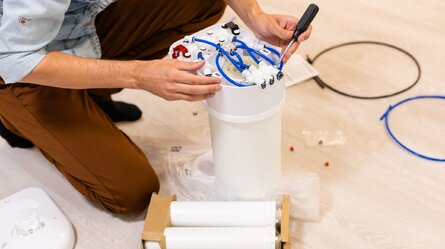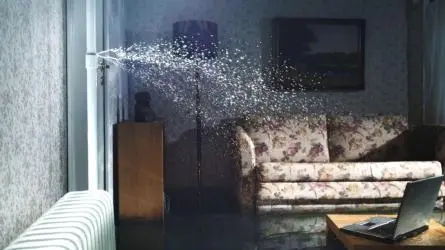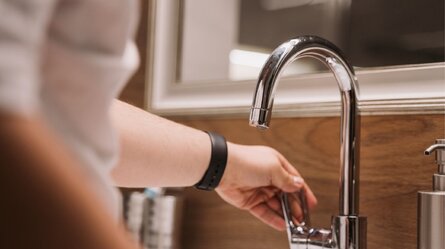Ever had a tap that just won’t stop dripping? It might not be your plumbing—it could be your tap washers. These small parts play a big role in controlling water flow, pressure and temperature in every type of tap, from the classic compression to the modern mixer tap. When they wear out, leaks, stiffness, or strange sounds may follow.
In this guide, you’ll learn about the different types of tap washers, which tap type they suit best, signs they need replacing, and when it’s time to call a pro.
What Is a Tap Washer and Why Does It Matter
Tap washers sit inside your tap and help seal the valve when the handle turns off the water. No matter the tap type—hot and cold, single or mixer—theycontrol water flow and prevent leaks.
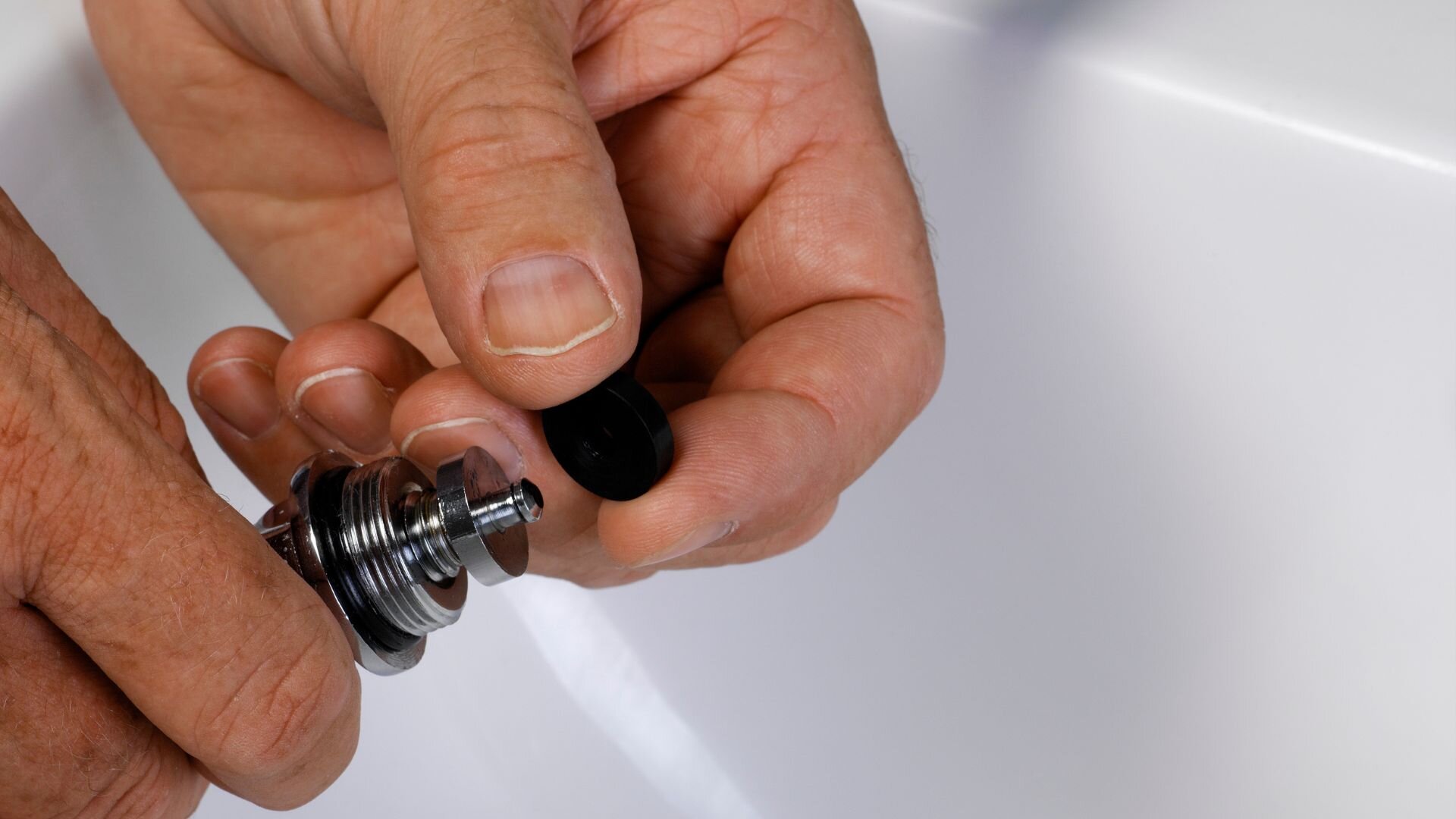
They come in various materials, and each type of tap washer works differently depending on the tap’s internal design. Some, like rubber washers, compress to stop water, while others, like ceramic disc types, rotate to block the flow.
Using the wrong type or ignoring worn washers may lead to constant dripping, higher water bills, and even damage around the bath, sink or laundry.
Common Types of Tap Washers Used in Australia
Rubber Washers
Rubber tap washers are the most common and usually found in standard compression taps. When you turn the handle, the rubber washer compresses against the valve seat to stop the flow.
They’re easy to replace, cheap, and widely available. However, rubber doesn’t last forever. Over time, it becomes brittle, leading to dripping taps and the need to replace them more often. They’re a great option for a quick fix but not ideal for long-term durability.
Ceramic Disc Washers
Ceramic disc washers are a modern solution, often found in mixer taps. These come in pairs and rotate to control hot and cold water flow through precise alignment of two ceramic discs.
They offer smooth turning and last for years without needing much maintenance. Because they don’t compress like rubber, they’re less likely to wear quickly. However, they’re not the best option for homes with high water pressure, as this may cause internal cracks.
Although more costly, they’re a top choice for those looking for long-term reliability and sleek handle movement.
Fibre Washers
Fibre washers are made from natural or composite materials and were commonly used in older tap designs. You’ll often see them in cold water taps or low-pressure plumbing setups.
These washers swell slightly when wet, creating a tighter seal around the valve. This feature helps improve sealing in aged or worn tap seats. They don’t last as long as ceramic options, but they’re a simple, low-cost fix in the right setting, especially in heritage homes.
Jumper Valve Washers
A jumper valve washer is found in traditional Australian taps. It’s made of a rubber washer combined with a small brass disc that moves up and down with the tap spindle.
When the handle turns, the washer jumps up and down to open or close the flow of water. This design suits both hot and cold taps.
They’re a reliable and standard choice across many homes. While durable, jumper valves may still wear out over time, leading to issues like squeaking or tight turning. Replacing them is usually easy with parts available in most hardware stores.
O-Rings
O-rings aren’t technically washers, but they’re essential. You’ll find them in mixer taps and around tap spindles, sealing the gaps between moving parts.
If you notice leaking around the base or handle, a worn O-ring may be to blame. These rubber rings degrade after years of use, especially in hot water systems. Replacing them helps prevent water from escaping and keeps the internal parts turning smoothly.
Washerless Systems
Washerless systems use ball, cartridge, or disc mechanisms inside the tap instead of traditional washers. These taps arepopular for their durability and modern look.
They offer better control over water temperature and pressure, making them ideal for mixer setups. However, when something goes wrong, the entire cartridge or ball may need replacing. Repairs can be complex, so many people call a plumber to handle these systems.
How to Identify Which Washer You Need
Does your tap squeak, drip, or feel hard to turn? These are common signs that the washer—or even another internal part—may be worn out. Left unchecked, these small issues can lead to more serious plumbing problems.
First, figure out what type of tap you’re working with. Is it a separate hot and cold tap, a single mixer tap, or something more modern like a cartridge or ceramic disc system? Each of these designs uses different types of washers—and in some cases, none at all.
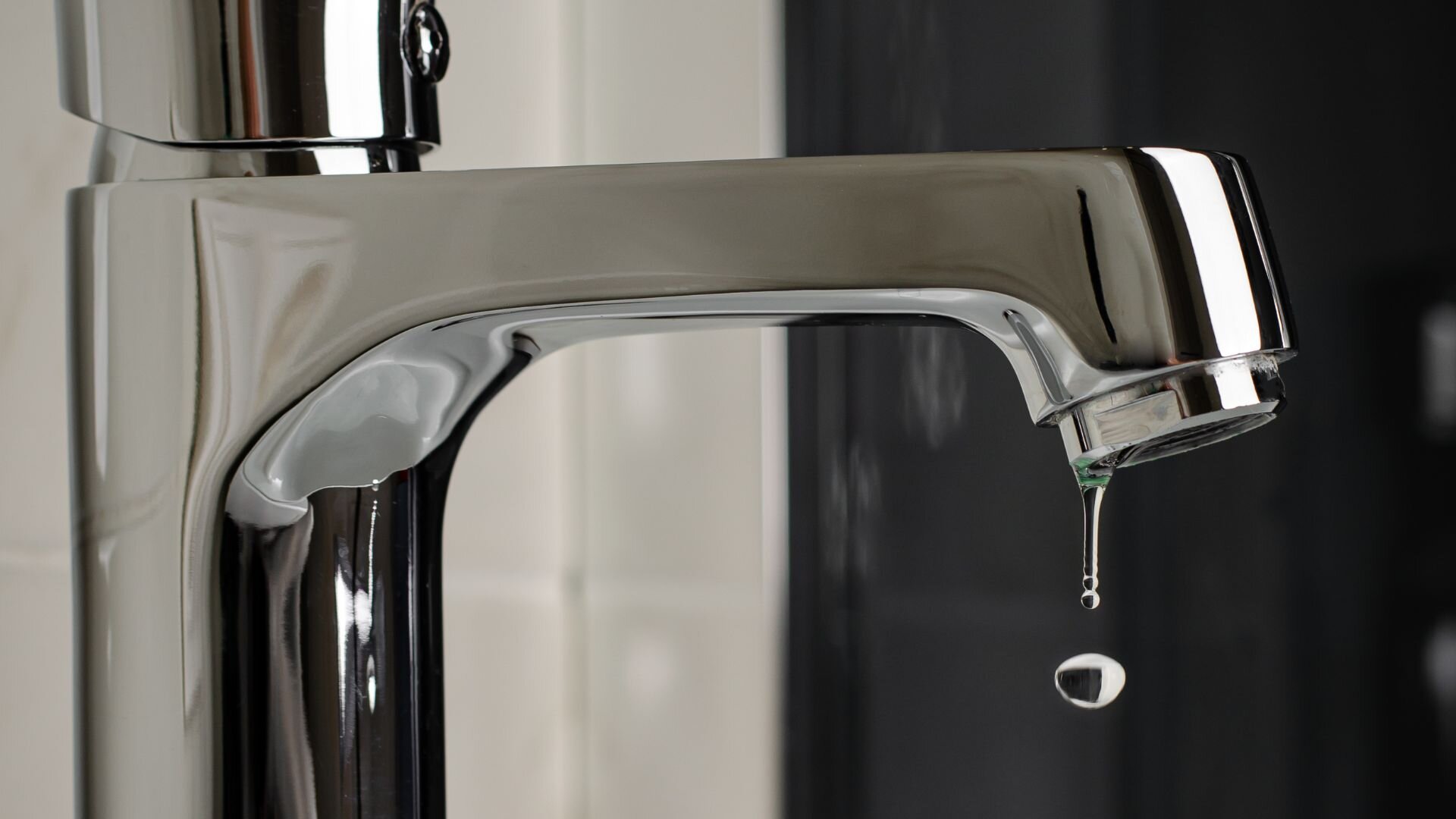
To get started, turn off the water supply at the isolation valve, then remove the tap handle and spindle to expose the internal components. Once inside, you’ll see the washer (or cartridge). It may be rubber, fibre, ceramic, or brass, depending on the tap type.
Take the old washer with you to a hardware store—most staff can help you match the size and material, especially if you’re unsure what you’re looking at. If the washer is in poor shape, bring the entire tap component if possible for better comparison.
There are also washer kits that include anti-drip, high-pressure, and standard replacements, giving you a few options to trial if you’re doing it yourself. You might also find part numbers or branding on the tap body, which can help identify the right replacement.
If it all gets too confusing, don’t worry. Getting a licensed plumber involved is often the best way forward. They’ll know exactly which part is needed, saving you time, stress, and the risk of damaging the tap or its internal valve.
DIY or Call a Professional?
Replacing basic rubber washers in a compression tap is usually a DIY job, especially if you’ve got the tools and know how to shut off your water.
But with mixer taps, ceramic disc systems, or internal cartridge types, things get trickier. These involve more parts and precision.
If you get the installation wrong, you may cause leaks or even crack the tap housing. And if the dripping continues after replacing a washer, it may signal a deeper plumbing issue.
When in doubt, call a licensed plumber—it’s the safest way to fix the problem without further damage.
Keep Your Taps in Check: Tips for Longevity
Check your taps regularly for signs of leaking, stiffness, or slow flow. A quick look inside now and then can save water and stress later.
Avoid over tightening taps—it may feel like the best way to stop drips, but it damages washers.
Schedule maintenance every few years, especially if your plumbing is old. A pro can spot early issues you might miss.
When it’s time to replace washers, go for quality parts. They may cost more, but they last longer and protect your tap’s internal parts better than cheap versions.
Time to Stop the Drip – Your Local Experts Are Here
Still dealing with a leaking tap that just won’t behave? You’re not alone. Many Perth households face the same issue, and most of the time, it’s all down to the washers.
At Woolf Plumbing, we’ve seen every type of tap under the sun. From replacing a jumper valve in a standard bath tap to fixing ceramic disc issues in high-end mixer taps, we’ve got the tools and the know-how to get things sorted fast.
Why risk a flooded kitchen or skyrocketing water bill? Our licensed plumbers are just a call away and ready to help across Perth and the surrounding suburbs.
Don’t put off that drip another day. Get in touch with Woolf Plumbing today and enjoy a smoother, quieter, and water-efficient home—one tap at a time.


